Géo Martel Desvres large handpainted Delft chinoiserie style lobed dish

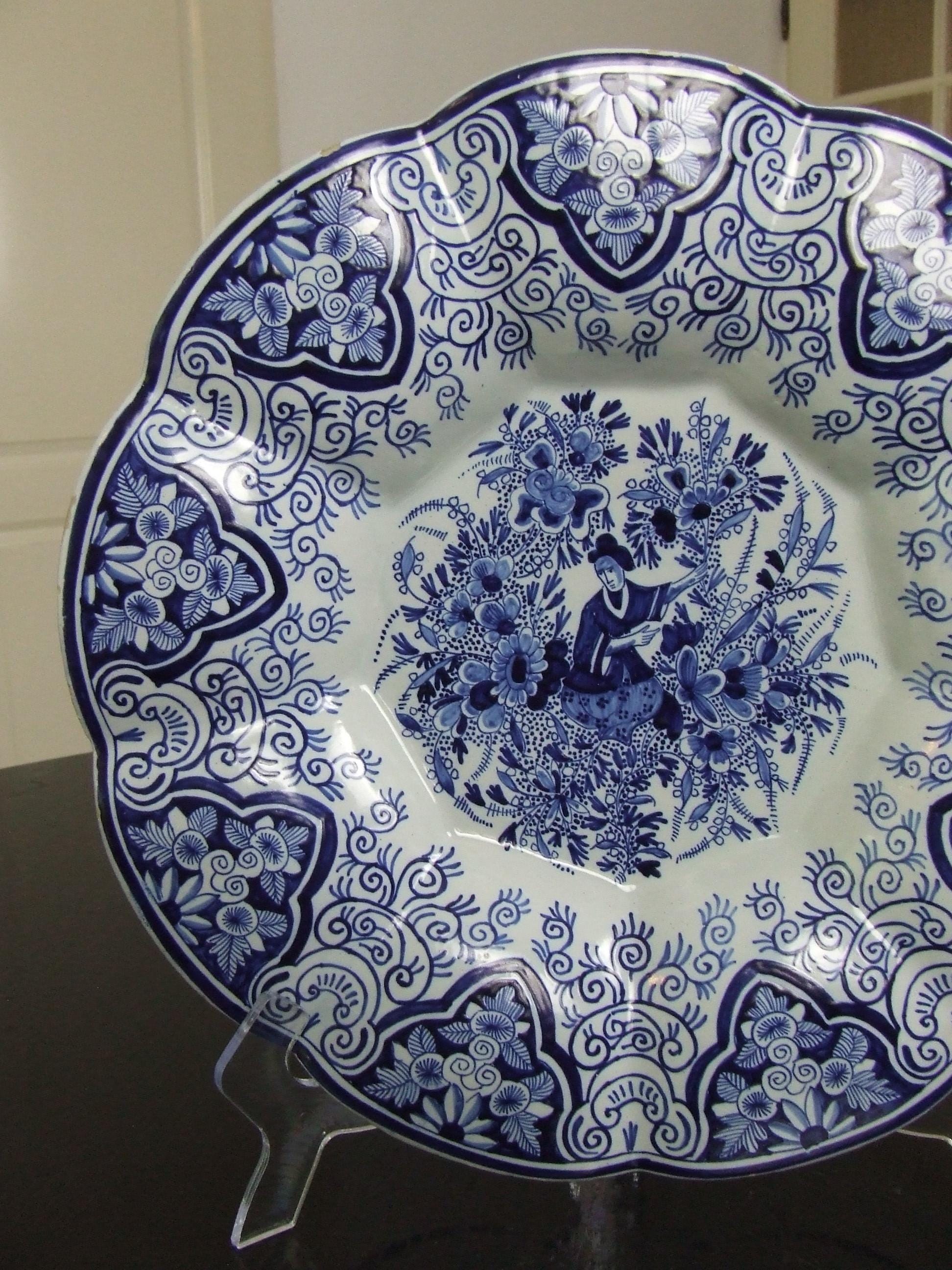
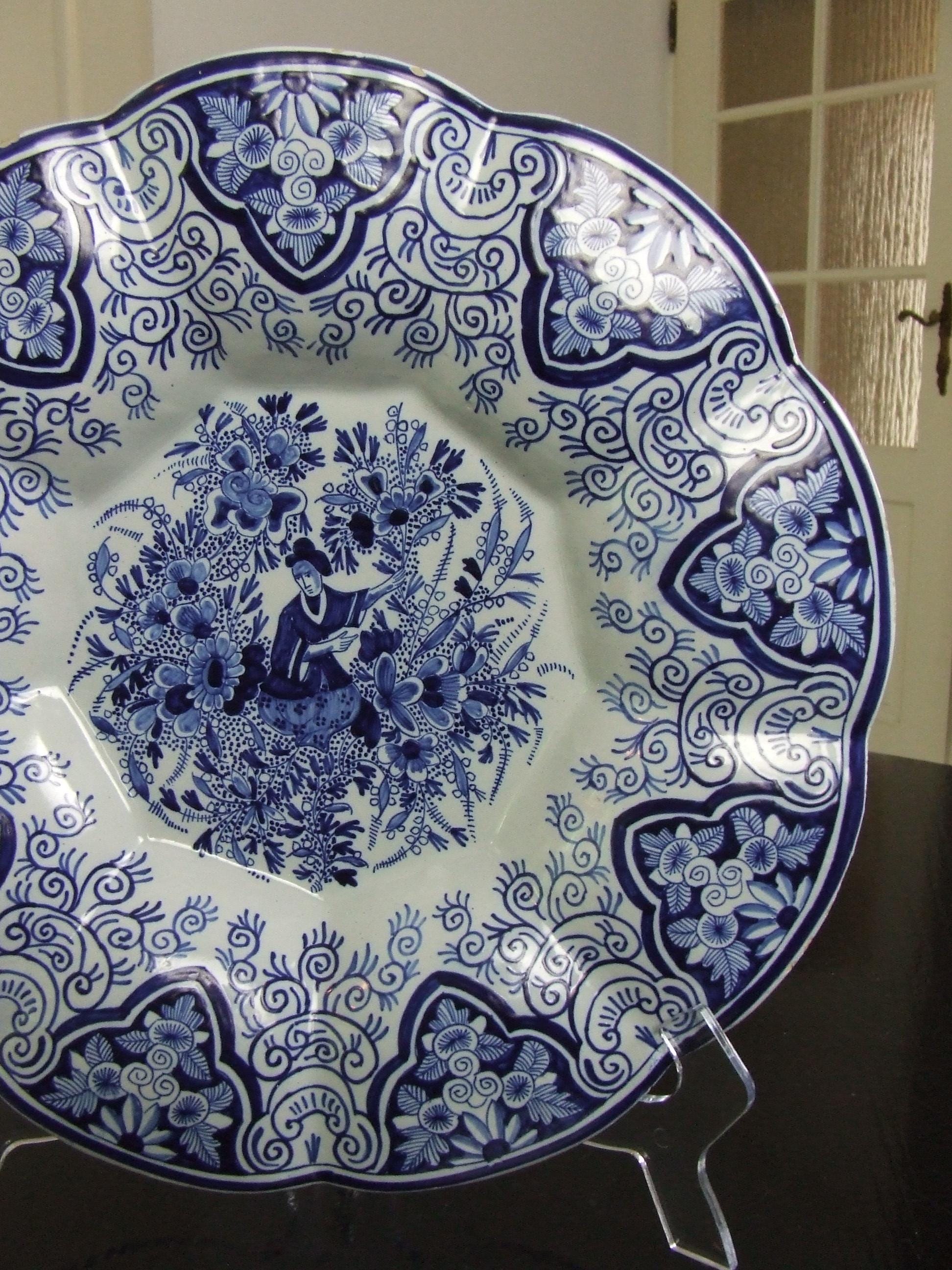
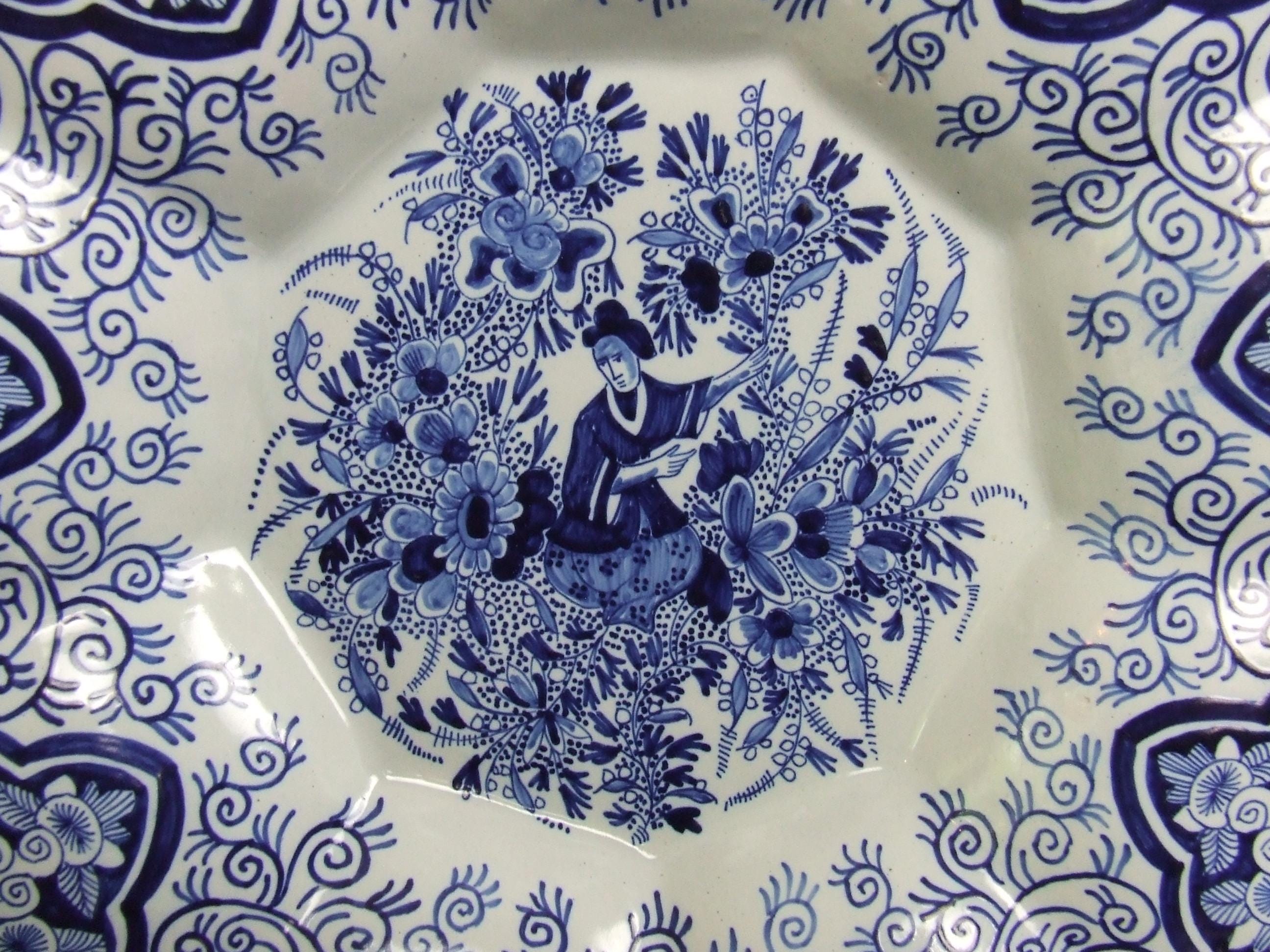
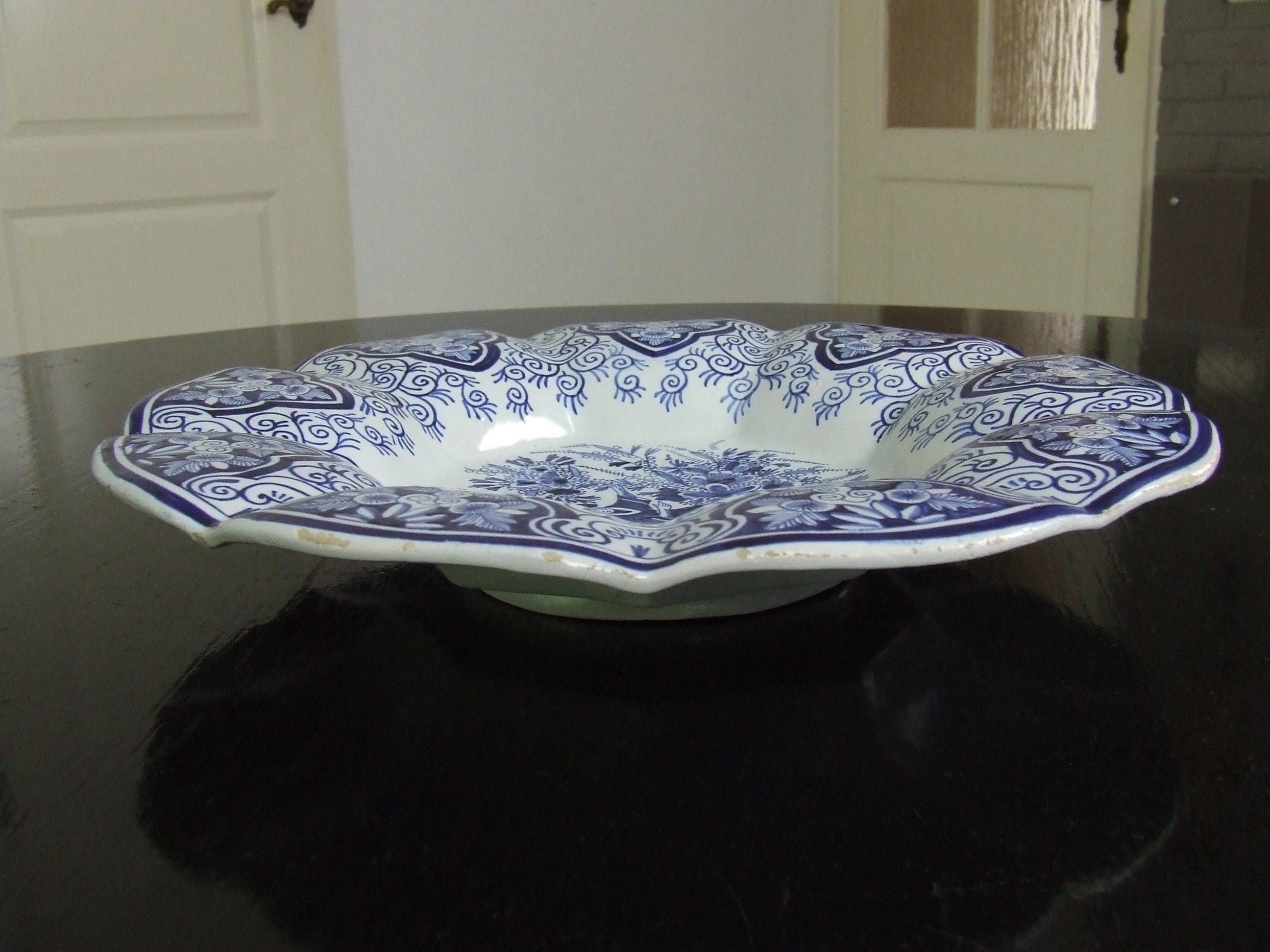
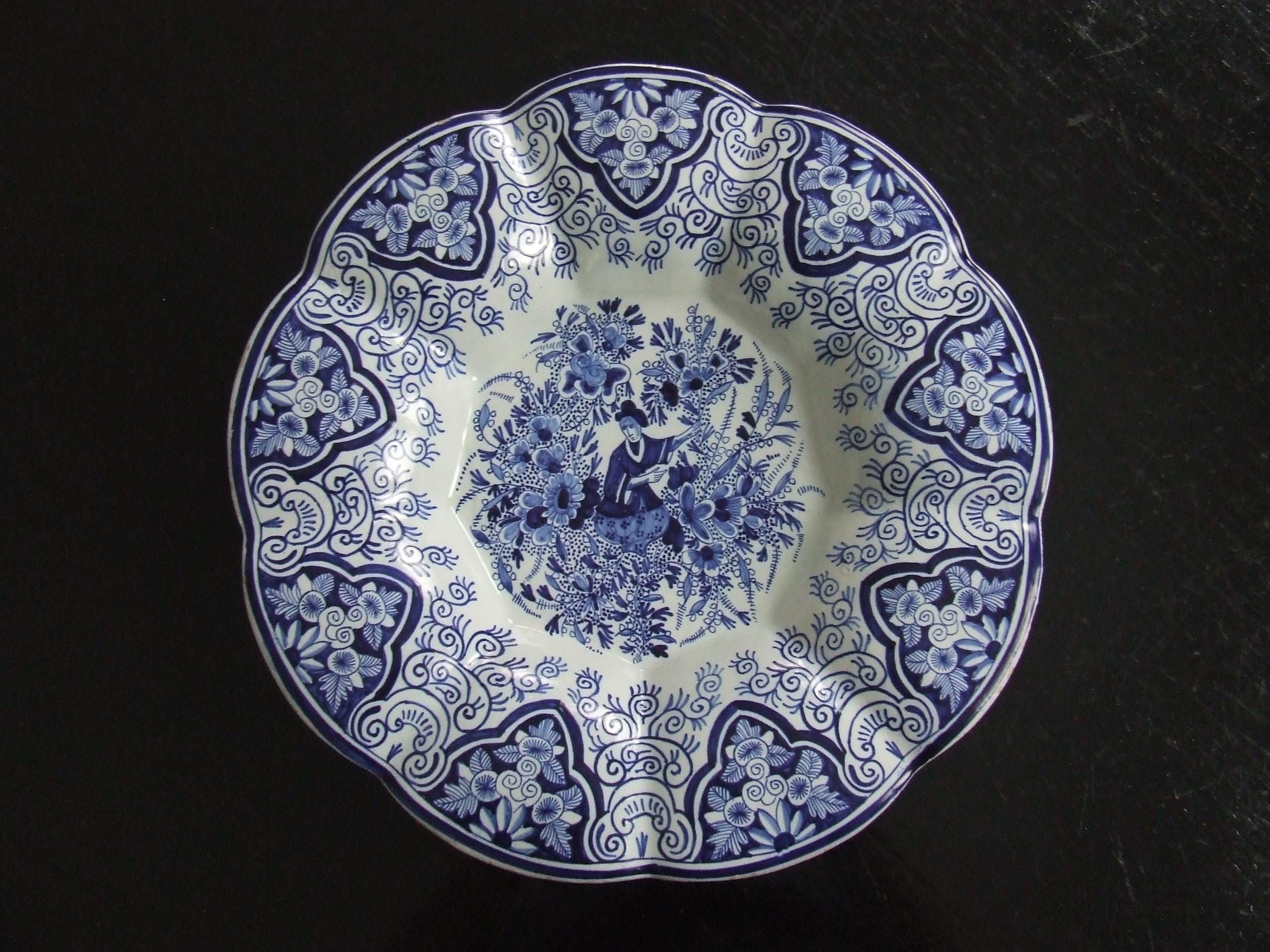

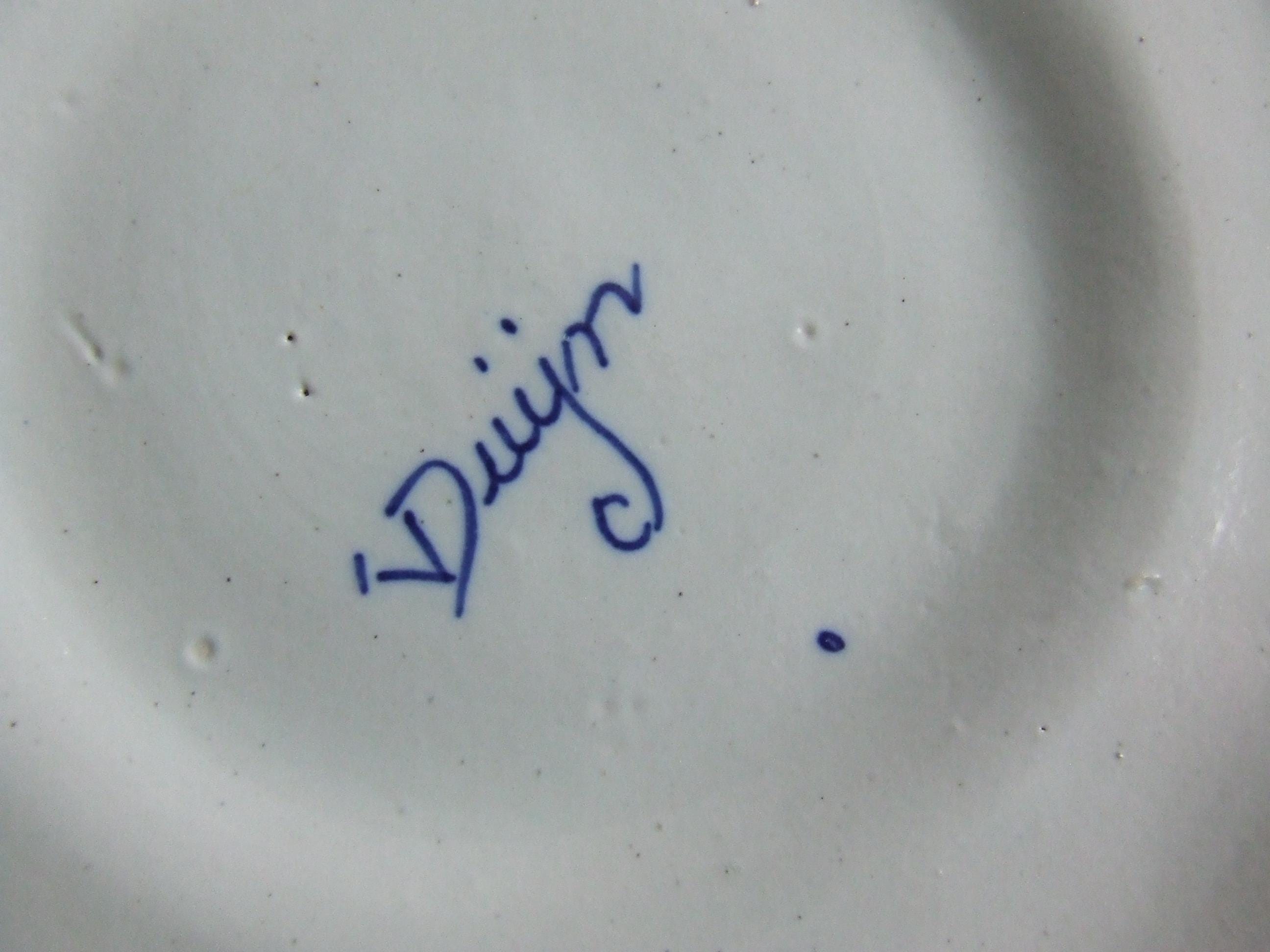
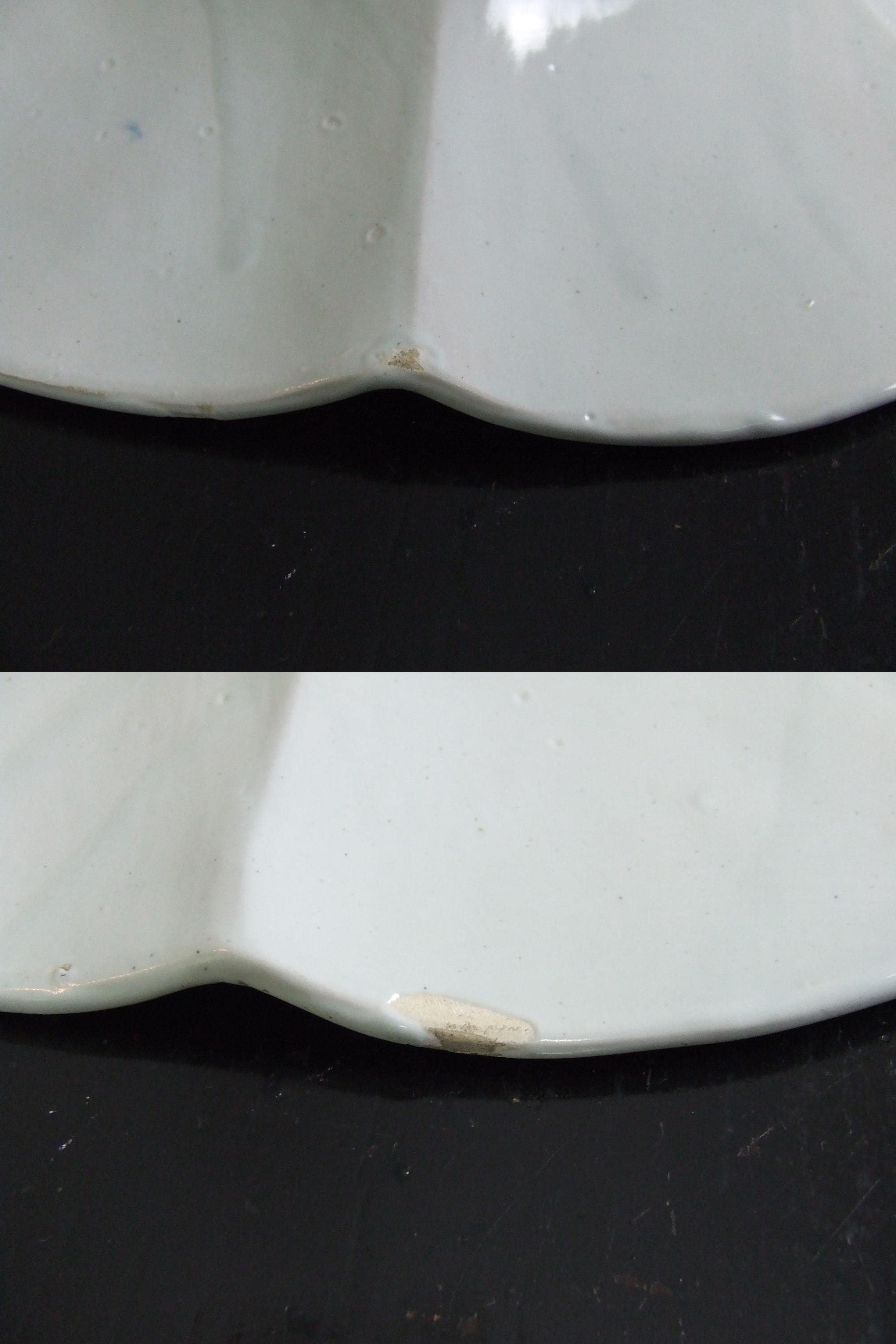
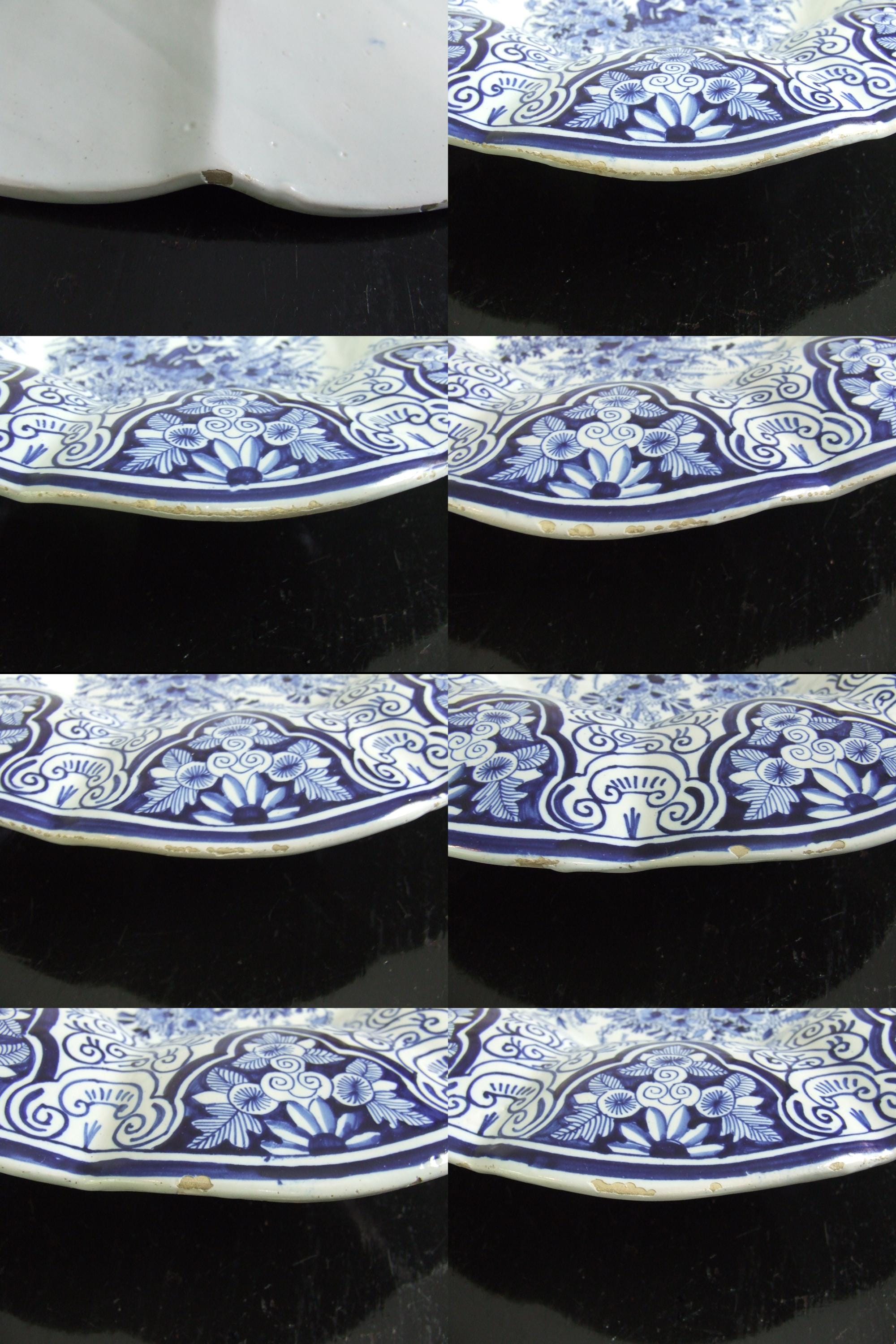
$122.60
Beautiful large (36,2 x 5,8 cm) handpainted lobed dish made between 1900 and 1942 by Georges Martel (Géo Martel) in Desvres, France. This type of dish is called a "plooischotel" in Dutch, which literally translates as "pleated dish". It is a classic shape of Delft style dish from the 17th century which originally was intended as a fruit bowl. Later "plooischotels" also became popular as wall decoration. Our dish is a relatively modern copy of these classic Delft dishes. The dish has nine wide lobes around a nine-fold centre and is painted onglaze in dark blue on a white tin-glaze background. The centre shows a Chinese figure sitting cross-legged among a display of exotic flowers and mimosa-style dotted blooms. The edge is decorated with elaborate Delft style ornaments. The painting is of good quality: crisp and precise. The style of painting closely follows the style of painting which was used on the original 17th century dishes.
The backside of the dish has an apocryphal "IVDuijn" mark, which was the mark used by the Delft pottery of Johannes van Duijn between 1764 and 1773. Géo Martel is known to have used this mark (amongst others) on their copies of classic Delft items. The way the mark is written corresponds with their way of painting the mark (For reference, see this excellent book on Delft style pottery made in Desvres by Géo Martel: "L'heritage de Delft à Desvres - Les faïences de Géo Martel" (2021, éditions Faton)). Also other characteristics of the dish point to it being made by Géo Martel (as they say: it is "signed all over"). Examples of genuine Johannes van Duijn marks and items can be found here: https://delftsaardewerk.nl/en/mark/ivduijn
The dish has a raised footring with two holes in it, to put a wire through for hanging it on a wall.
Condition: very good, there are no cracks, hairlines or restorations. The dish does have glaze wear on its edges, which is very likely intentionally made, to give the dish an older look. This is because antique Delft items from previous centuries will always have glaze wear on their edges, as tin-glaze is quite brittle on edges. So a dish with an intact glaze on its edges would not make a very convincing copy of a 17th century Delft dish. Upon close examination part of the glaze damages appear to be intentional glazing defects, where the glaze has been applied intentionally thin, so it would not hold. These can be recognised by their smooth edges. Another part of the glaze damages seems to be made after the firing (intentionally or not). These can be recognised by their sharp edges. All in all the dish does display beautifully and (because of the glaze wear) makes a convincing copy of much older Delftware. Aside from the edge wear, there is no notable wear to the glaze of the plate, which has no scratches and also shows no crazing (an extensive crazing is often a feature of lesser copies of antique Delftware).
A nice and very interesting copy of a classic Delft style dish. Great to hang on a wall, but it can also be placed on its own in a plate stand. The plate stand featured in the photo's will be provided with the dish.
Made by: Georges Martel
Place of manufacture: Desvres, France
Year of manufacture: between 1900 and 1942
Method of decoration: handpainted (on-glaze)
Size: diameter 36,2 cm, depth: 5,8 cm
Weight: 1,3 kg
Additional pictures of the object can be provided if required.
----------------------------------------------------------------------
About Géo Martel:
Georges Martel - Géo Martel - was a faience manufacturer who operated from 1900 to 1942 in Desvres, in the north of France. During the nineteenth century, Desvres had become the most important earthenware centre in northern France. It acquired fame through the reproduction of pieces and decorations of the famous earthenware from other regions (Delft, Moustiers, Nevers, Strasbourg or Rouen porcelain works). Georges Martel, active from circa 1900, set up one of the largest ceramic factories in the area. He invited many different artists to contribute to his production, which included faience, pottery figurines, artistic tableware and accessories. After his death in 1942, the factory was continued by Jacques Martel and later renamed to Géo. Martel Co. in 1957. Production continued under this name until 2003, when the factory closed its doors, just like most other pottery producers in Desvres. Presently, only a few small potteries still remain in Desvres that produce traditional earthenware.
More information on Delftware produced by Géo Martel in Desvres can be found in this recently published (French language) book: https://www.faton.fr/editions/livre/l-heritage-delft-a-desvres.52694.php
----------------------------------------------------------------------
This beautiful item will be carefully packed and send by tracked and insured mail.
If you buy multiple items from our shop in one purchase, we will try to combine the items into one parcel. Any excess shipping costs will be refunded.
If you are not satisfied with your purchase, you may contact us within 14 days from the delivery date to return the item. If the item is returned in its original condition, we will issue a refund for the total purchase price of the item (return shipping costs are however not covered).
Buyers are responsible for any tariffs, duties and fees that may apply. Decorative ceramics imported to the USA from the Netherlands (European Union) are subject to an import duty of 15% of the item value.
Shipping from The Netherlands
Processing time
1-2 business days
Customs and import taxes
Buyers are responsible for any customs and import taxes that may apply. I'm not responsible for delays due to customs.
Payment Options
Returns & Exchanges
I gladly accept returns
Just contact me within: 14 days of delivery
Ship items back to me within: 30 days of delivery
I don't accept exchanges or cancellations
But please contact me if you have any problems with your order.
Conditions of return
Buyers are responsible for return shipping costs. If the item is not returned in its original condition, the buyer is responsible for any loss in value.
Frequently Asked Questions
What are your shipping times?
We will send off your order within one or two working days. We use the standard parcel service of PostNL to ship our parcels. You can find their estimated delivery times per country here (shortened link to pdf download of PostNL): https://bit.ly/3ZHTMJ9. In the fourth column (parcels) you can find the delivery times of the standard service (in estimated business / working days). Please keep in mind that customs / import procedures in non-EU countries can sometimes add an extra week (or even two weeks) to the delivery times.
For shipments to the USA we use FedEx Economy delivery, as PostNL temporarily does not deliver to the USA due to changes in import duties. Estimated delivery time is four days after shipping, if all goes well at customs.
How do you pack your items, will my item arrive safely?
Broken ceramics is a thing we do not like! Not only is it a waste of time and money, but it also (often) means the end for a rare and unique item, which was treasured and cared for by their previous owners. So we really want to avoid any damages during shipping!
We have lots of experience of shipping ceramics, and we have seen what works and what does not work to protect ceramics during transit. If we ship multiple items in one package, each item is carefully wrapped and kept well seperated from the other items. We use large boxes, with plenty of buffer all around the items, so the packages can withstand a lot of abuse. All our packages should be able to cope with a 1,5 m drop without the items getting damaged.
Do you take care of the environment?
Yes we do. We re-use packaging materials as much as possible, which means we rarely need to buy new materials for our packaging. Only foam peanuts are sometimes bought by us, in which case we prefer to use green starch based peanuts which are fully biodegradable, non-toxic and water-soluble.
Each year, we calculate the greenhouse gas emissions in CO2-equivalents caused by our shipping. We multiply that amount by 200% and then offset it in certified CO2 compensation projects based on tree planting / reforestation in various parts of the world. So far, we have offset 35,5 tonnes of CO2 emissions in projects in Bolivia and Borneo (Indonesia). See https://treesforall.nl/en/projects/ for more information on the projects.
How should I take care of my Dutch ceramics?
First of all, don't let them fall! Always handle them in a mindful way and put them in spots where they cannot be accidentally bumped over when cleaning or vacuuming. Some people put some (clean) sand in vases to make them more stable.
Second, don't clean them too often! Underglaze painted Gouda and Delftware can be perfectly cleaned with water if necessary, but often just dusting them off or polishing them up a bit with a soft dry cloth is enough. Overglaze painted items should not be cleaned too often.
The colours of ceramics do not fade in sunlight, so you can put them in bright spots where they look good. But do avoid large temperature differences, which will cause increased crazing in many Delftware and also Gouda type pieces.